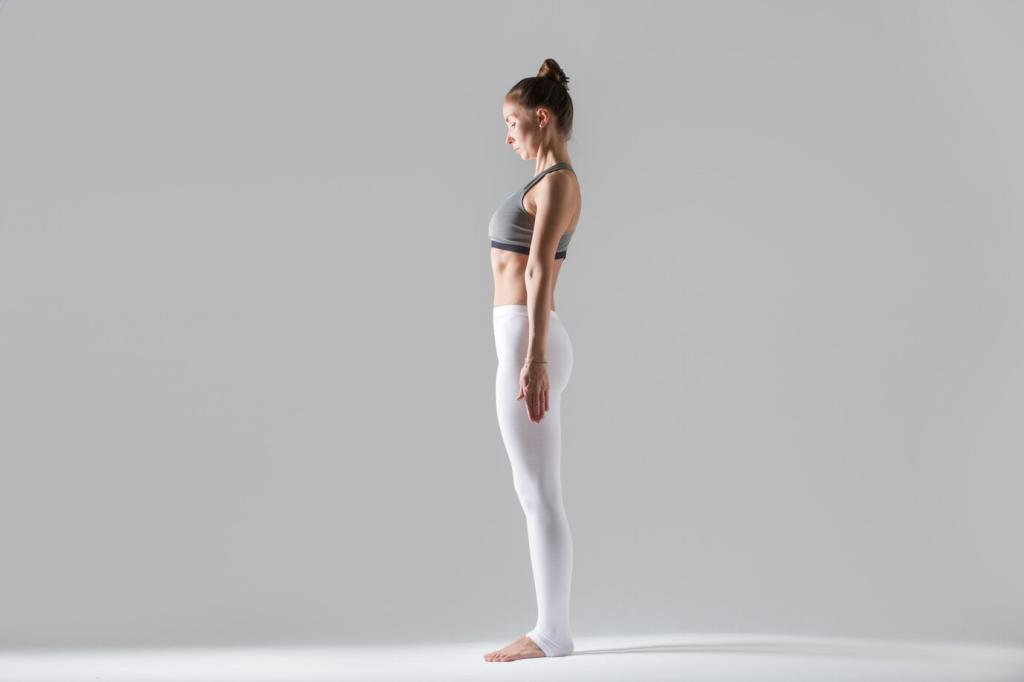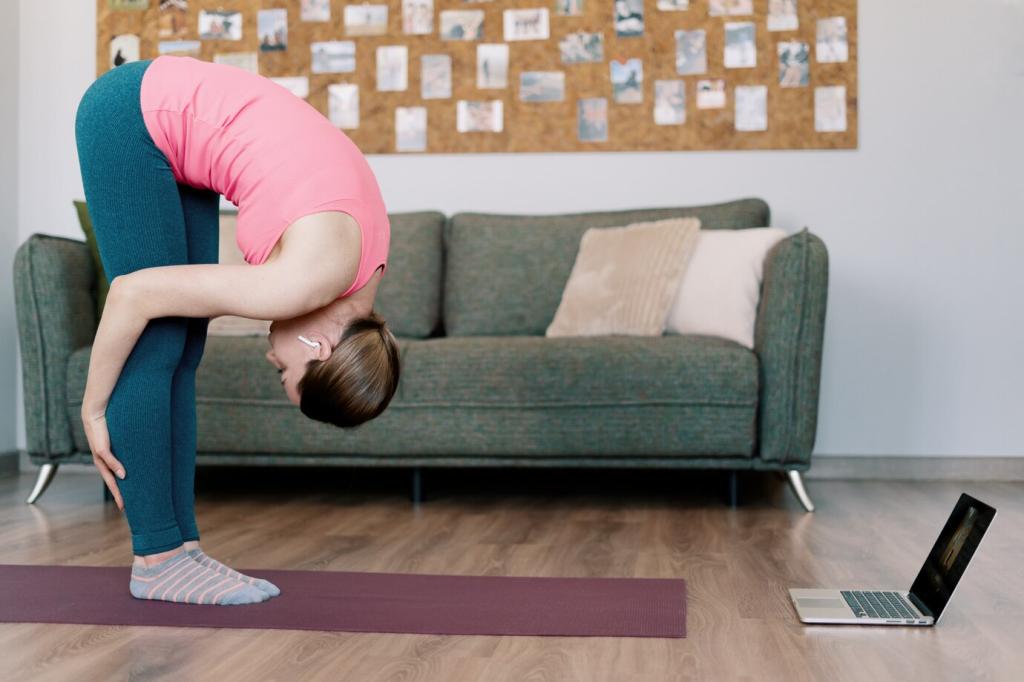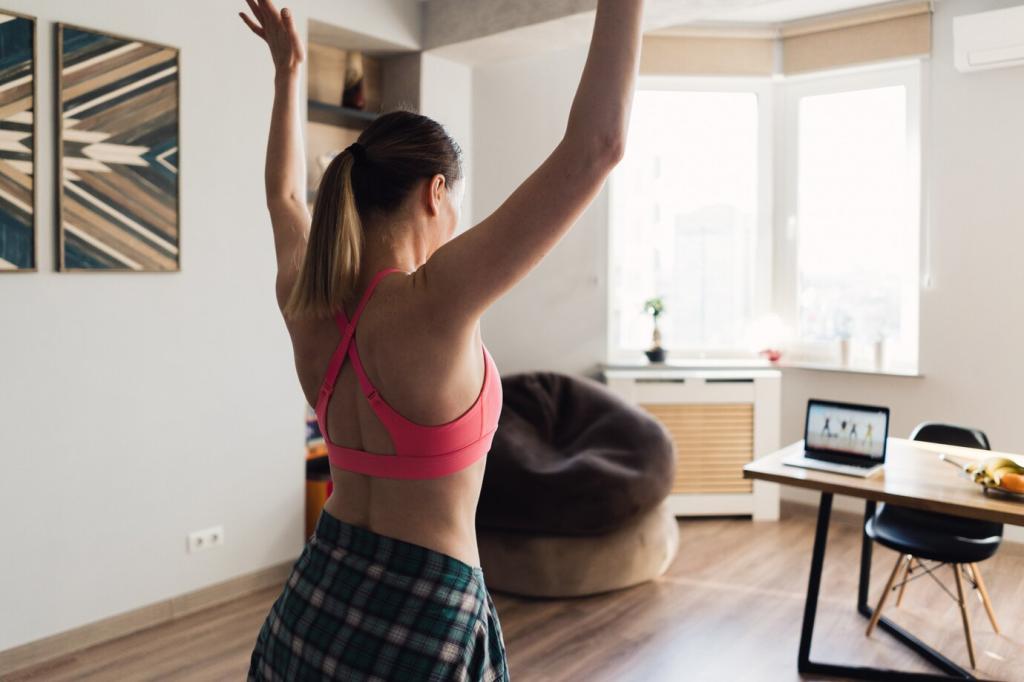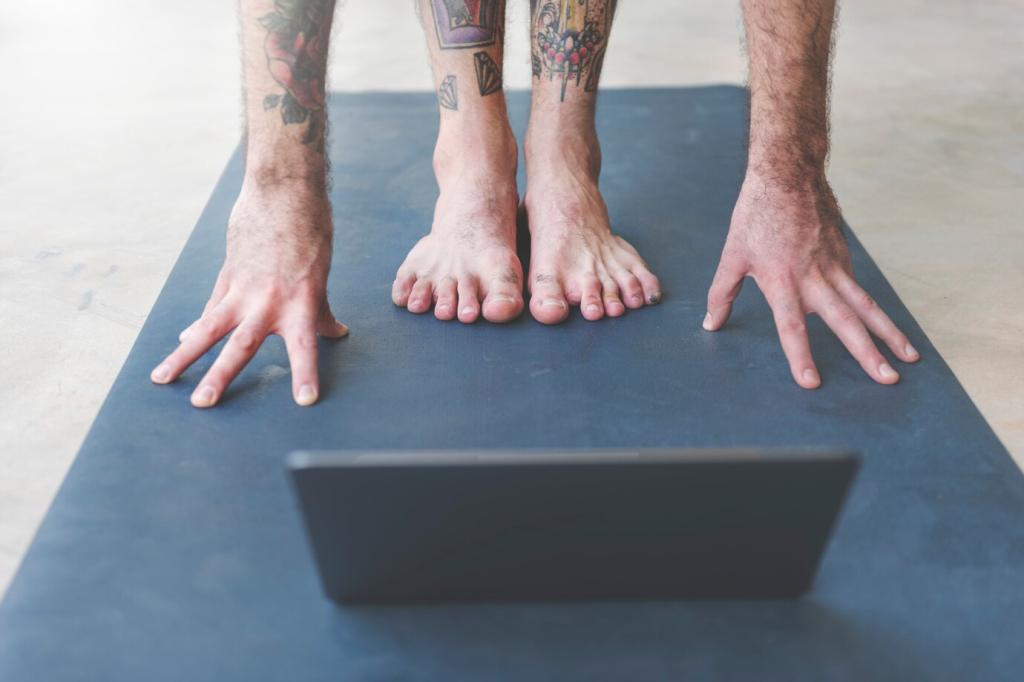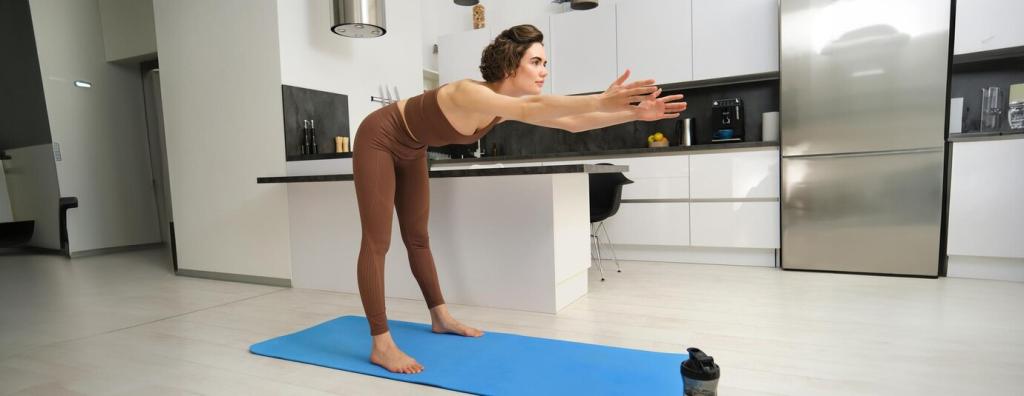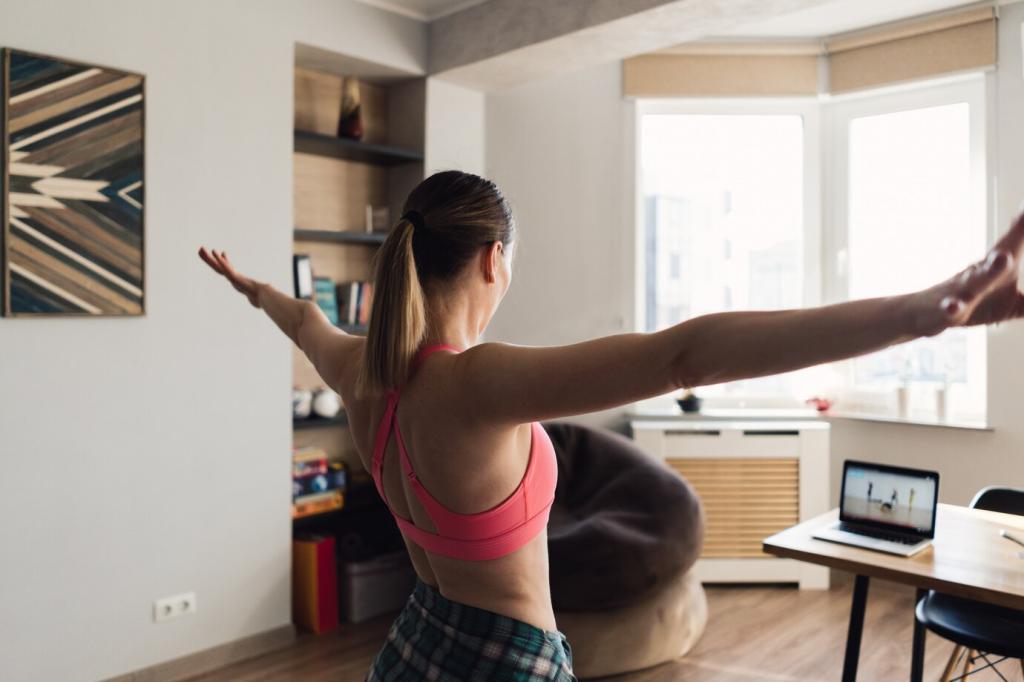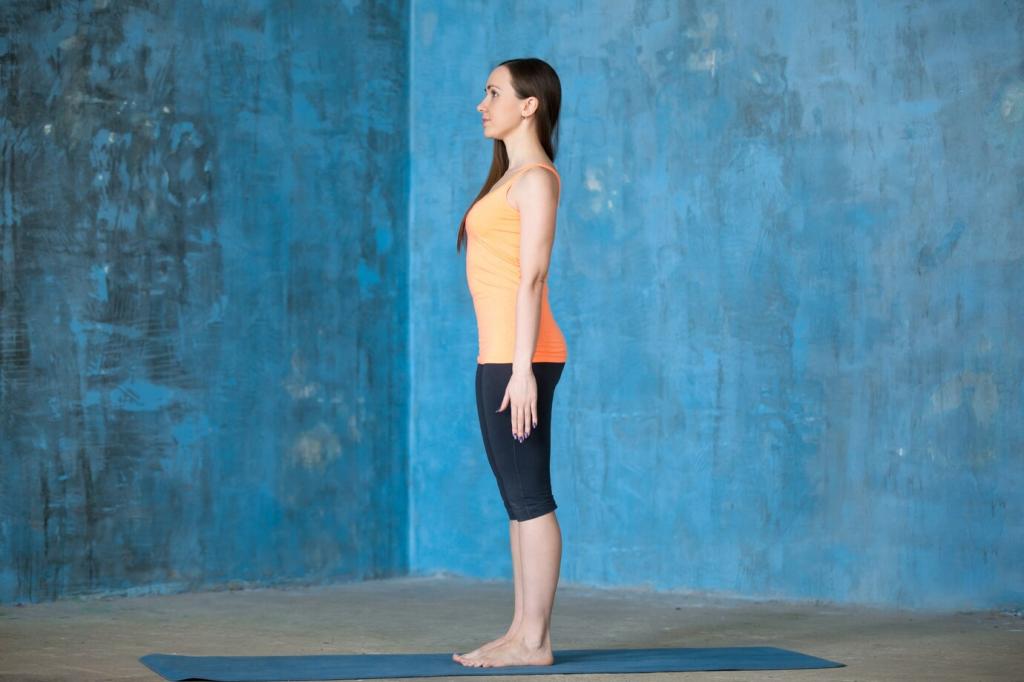Evidence-Based Setup: Heights, Angles, and Tools
Aim for elbow height at or just below the desk, elbows near 90–100 degrees, shoulders relaxed, and wrists neutral. A slight negative keyboard tilt can reduce extension strain. Adjust one variable at a time and note immediate changes in forearm and shoulder comfort.
Evidence-Based Setup: Heights, Angles, and Tools
Place the top of your screen at, or a little below, eye level, about an arm’s length away. Bifocal or progressive lens users may prefer a slightly lower monitor. Share before-and-after photos of your display alignment and the neck relief you notice.
Evidence-Based Setup: Heights, Angles, and Tools
Supportive shoes and an anti-fatigue mat reduce pressure hotspots and perceived exertion. Alternate foot positions or rest one foot on a small step to ease lumbar load. Test different mat densities for a week each and report the winner for all-day comfort.

